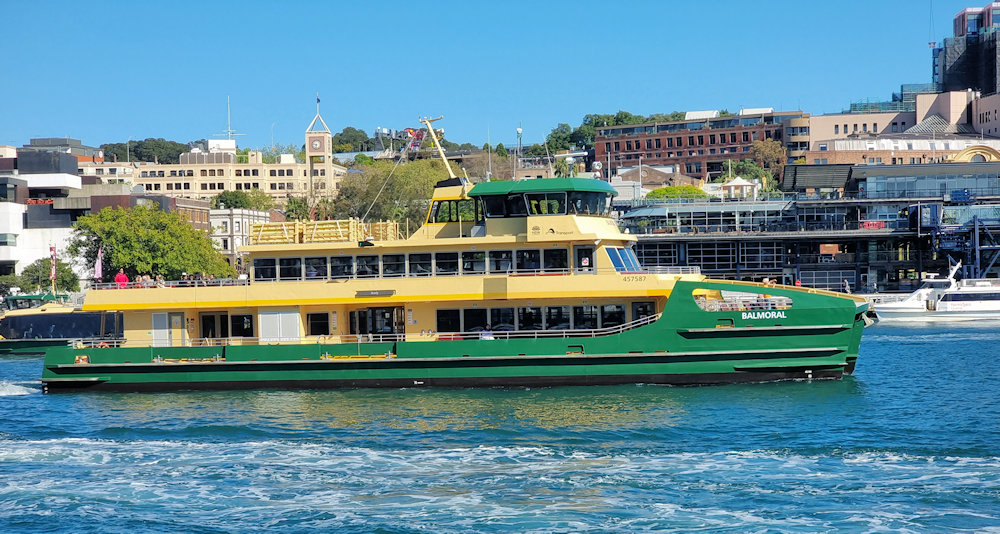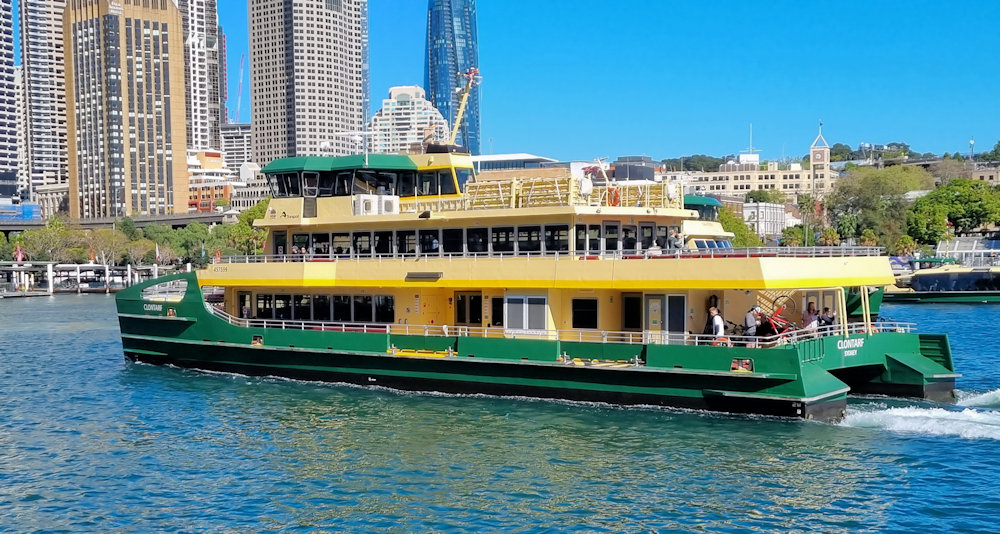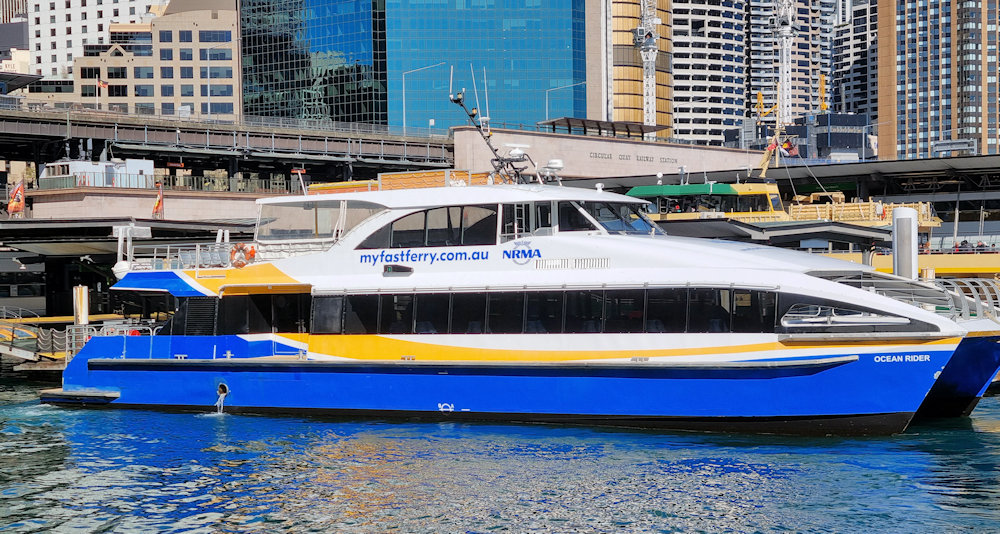Tag: New South Wales
-
Sydney Ferry Balmoral

Sydney Ferry Balmoral The Balmoral is an Generation 2 Emerald class ferry operated by Sydney Ferries on Sydney Harbour. It has a wave piercing bow enabling it to cross the Sydney Heads on days with high swells while operating from Circular Quay to Manly. Balmoral was completed in 2021. Read more
-
Sydney Ferry Clontarf

Sydney Ferry Clontarf The Clontarf is an Generation 2 Emerald class ferry operated by Sydney Ferries on Sydney Harbour. It has a wave piercing bow enabling it to cross the Sydney Heads on days with high swells while operating from Circular Quay to Manly. Read more
-
Ocean Rider

Ocean Rider Ocean Rider is a Manly Fast Ferry. It is a 34m wave piercing catamaran built by Incat. Read more